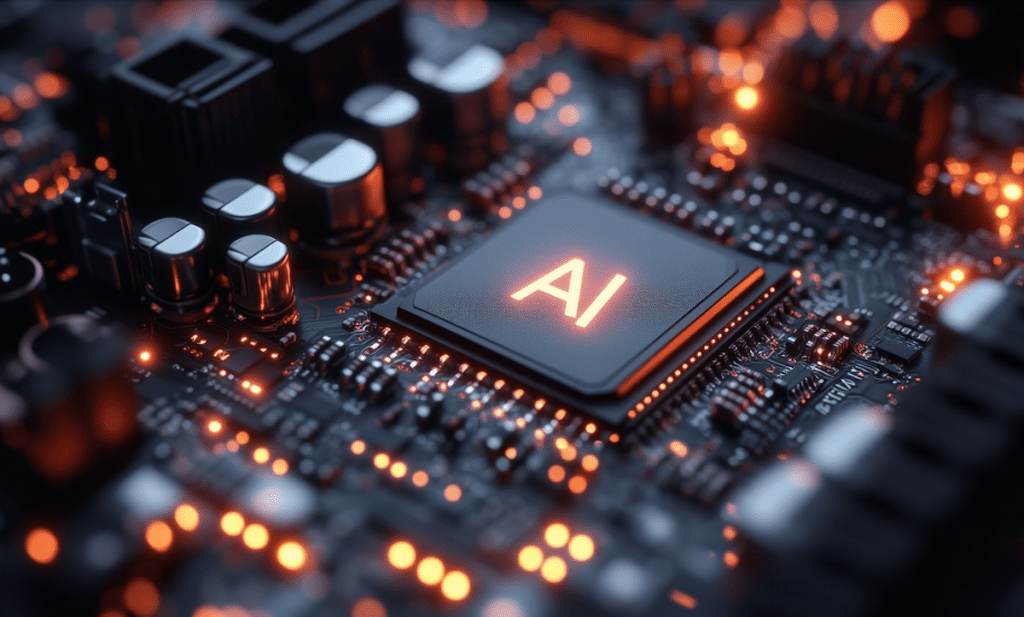The Trump administration’s on-again, off-again tariff policy is creating a wave of uncertainty that is reverberating across the AI industry — and its consequences could be felt for years to come.
First, the good news: Tariffs affect physical goods rather than digital goods and services, including intellectual property (IP) such as artificial intelligence (AI) software and inventions, Google Brain founder Andrew Ng wrote in a post on X.
“IP is difficult to tax, because each piece of IP is unique and thus hard to value, and it moves across borders with little friction via the internet,” said Ng, who is now founder and CEO of DeepLearning.ai.
Thus far, several major software companies in Silicon Valley have not seen changes in demand yet, according to a Wednesday (April 16) Morgan Stanley research note shared with PYMNTS. Analysts spent two days speaking with executives from Adobe, Asana, Box, DocuSign, Salesforce, Snowflake and other firms.
But AI uses hardware for training and processing — or it’s dead in the water. While computer chips were exempted from tariffs, other needed equipment would be hit, such as imports of servers, cooling hardware, networking hardware and power-generation and distribution equipment, Ng said.
Why not make the hardware in the U.S.? Ng said the U.S. “does not have the personnel — or know-how, or supply chain — to manufacture many of the goods that it currently counts on allies to make.”
The U.S. International Trade Commission lists China, Mexico, Taiwan, Vietnam and Malaysia as the top five countries exporting electronic products to the U.S. They comprise 65% of total electronic product imports.
On Tuesday (April 15), Trump’s executive order raised tariffs on Chinese imports up to 245% while 75 countries that are cooperating with the U.S. were hit with a rate of 10% for 90 days.
Read more: Big Banks: Consumers Keep Spending Despite Tariff Worries
Nvidia to Take a Big Hit
Nvidia, whose chips power the AI market, disclosed Tuesday (April 15) in an SEC filing that the U.S. government is requiring a license to sell its slower H20 chips to China and nations with U.S. embargoes on arms sales.
As a result, the chipmaker said it expects to book a $5.5 billion charge in its first quarter ending April 27 from related to H20 chip inventory, purchase commitments and associated reserves. Shares of Nvidia were down 7% at midday trading Wednesday.
Bank of America analysts said demand from OpenAI, Google and Amazon could help offset potentially lost sales to China, according to its April 15 report shared with PYMNTS. Higher average selling prices (ASP) for Nvidia’s Blackwell chips could also help mitigate any lost business.
However, BofA said Nvidia faces rising costs as well due to its U.S. manufacturing plans.
Five days after it was informed by the White House about licensing, Nvidia in a Monday (April 14) blog post unveiled plans to design and build factories for AI supercomputers entirely in the U.S., which the company said is a first.
It has commissioned more than 1 million square feet of manufacturing space to build its Blackwell chips in Arizona and AI supercomputers in Houston and Dallas. Mass production should ramp up in 12 to 15 months.
Last month, Nvidia CEO Jensen Huang told the Financial Times that the company expects to spend “hundreds of billions of dollars” to make chips and other electronics in the U.S. over the next four years.
“The engines of the world’s AI infrastructure are being built in the United States for the first time,” Huang said in the Monday blog post. “Adding American manufacturing helps us better meet the incredible and growing demand for AI chips and supercomputers, strengthens our supply chain and boosts our resiliency.”
Read more: Nvidia and Partners to Produce AI Supercomputers in US
Headwinds for FinTech Investments
The tech investment landscape is already shifting, according to S&P Global Market Intelligence.
While North American FinTech funding rose from $1.9 billion to $4.7 billion in Q1 2025 from a year ago, deal count dropped by 27% from 214 to 155. EMEA saw funding rise from $1.4 billion to $2.1 billion year-over-year despite rounds falling from 148 to 134. Latin America likewise saw funding rise from $400 million to $700 million, but deal count fell 30%.
Only the Asia-Pacific region saw declines in both capital raise and deal count: Investments dropped by 65% from $1.7 billion to $600 million and activity decreased by 33% from 119 to 80 rounds.
“After showing early signs of recovery in Q1, fintech funding now faces headwinds from rising geopolitical tensions and the ripple effects of sweeping U.S. tariffs,” Sampath Sharma Nariyanuri, senior fintech research analyst at S&P, said in comments sent to PYMNTS.
“Heightened market volatility is dampening investor risk appetite, putting late-stage funding rounds and IPO pipelines under renewed pressure.”
Market turbulence has already derailed several high-profile initial public offerings (IPOs): Digital payment provider Klarna and ticket marketplace StubHub have paused plans to go public, according to The Wall Street Journal.
FinTechs dependent on consumer discretionary spending, like buy now, pay later (BNPL) and credit card companies, are facing a “tougher macro environment, marked by slower transaction volumes and tightening credit,” the analyst said.
More stable are FinTech companies whose business is not tied to discretionary spending such as core banking platforms, issuer processors and non-credit BaaS providers. They are “proving more resilient” due to recurring revenues and long-term contracts, the analyst said.
Nariyanuri noted that stablecoins and “exotic FX corridors” could attract new interest as businesses seek alternatives to costly cross-border flows.
In this environment, AI startups need to develop regional strategies, as a one-size-fits-all approach won’t work, said Songyee Yoon, managing partner of Principal Venture Partners, which invests in AI startups.
Yoon told PYMNTS that startups also must consider factors beyond cost when optimizing their business model and cost structure for sustainability. Then “regional winners will likely emerge and challenge Silicon Valley’s absolute hegemony,” she said.


